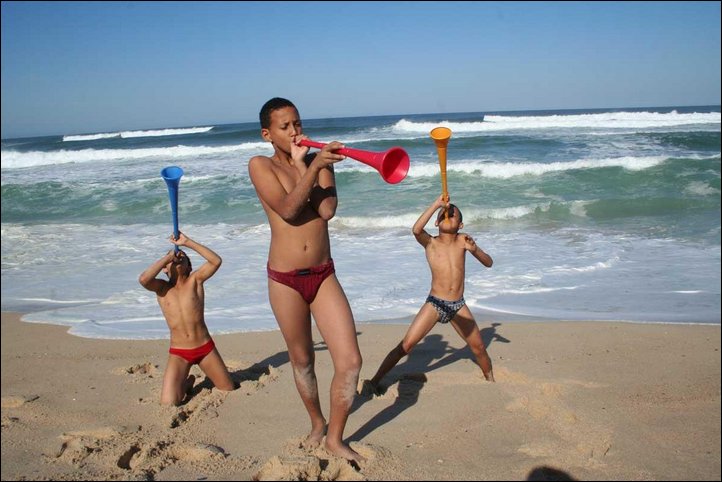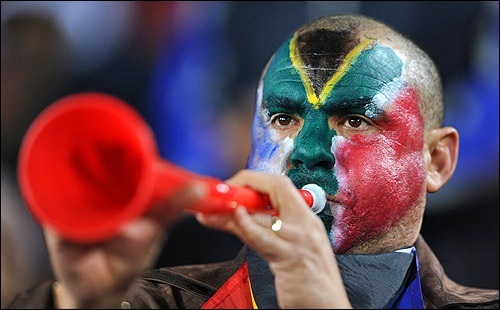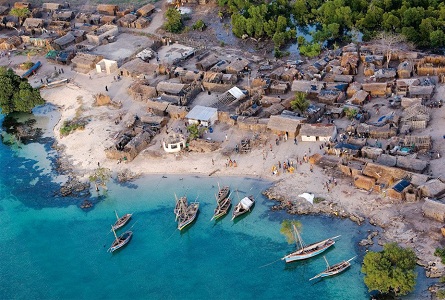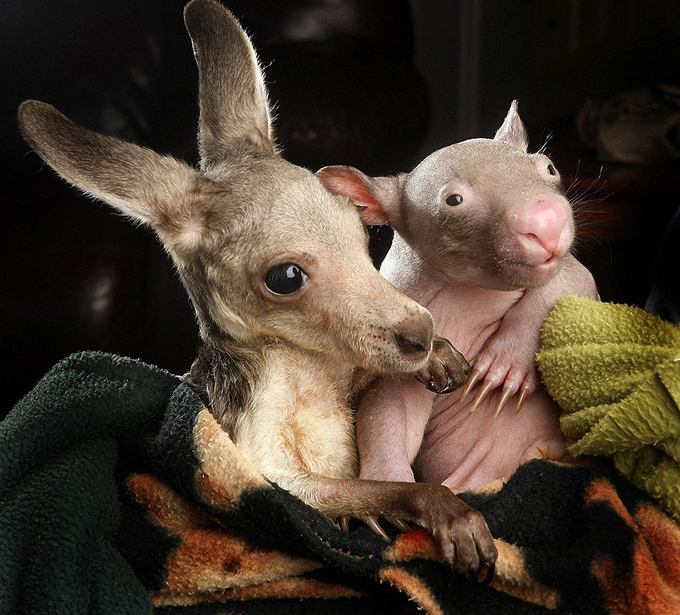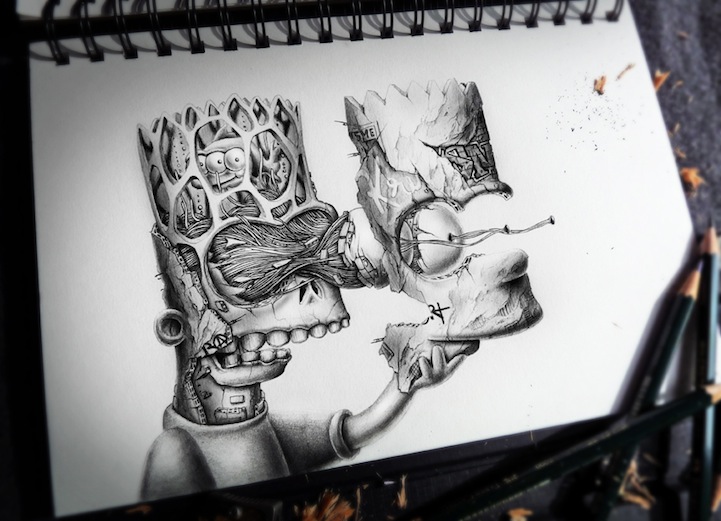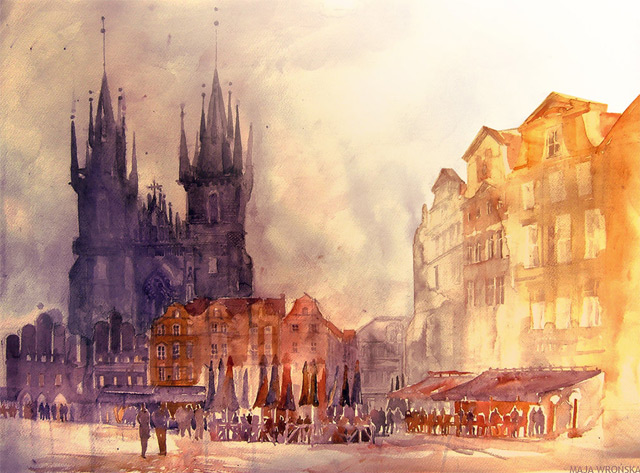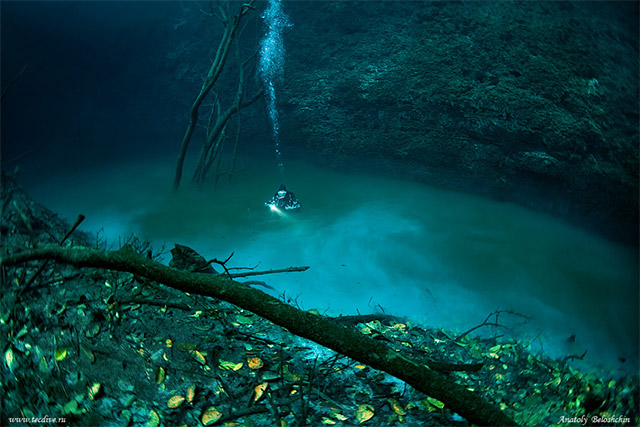From the beat of the samba drums in Brazil to the ringing of cow bells in Switzerland to the Mexican wave, the idiosyncrasies of several nationalities become apparent at football matches. South Africans are no exception, as those who have descended on the country for this year’s FIFA Confederations Cup have discovered.
“Without the vuvuzela, I don’t think I would be able to enjoy football,” said Sadaam Maake, one of South African football’s celebrity followers. “It brings a special feeling to the stadiums. It is something that makes the fans want to get behind their team.”
“When we started the vuvuzela, there was so much sadness in our country in those years and it brought so much joy,” explained Mzion Mofokeng, another iconic football enthusiast. “All of a sudden people would go to the stadiums because of this instrument that was able to get fans on their feet and start cheering. For few hours, they would forget about the reality in our society and enjoy the sound.
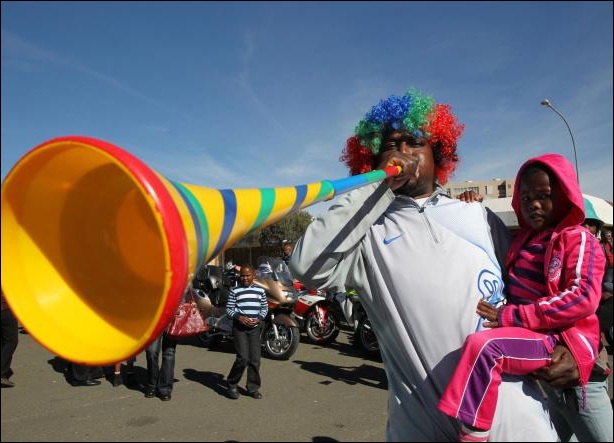
However, Mofokeng did add a warning: “In order for it to produce a nice sound, someone must know how to blow it. It must be done with a controlled voice and you need some art for that.”
Others, like the Spain midfielder Xabi Alonco, have different opinion.“I find these vuvuzelas annoying.They don’t contribute to the atmosphere in the stadium. They should put a ban on them”, said he.
Where is the truth, who knows, but let us try to make it, at least, little closer to all of us.
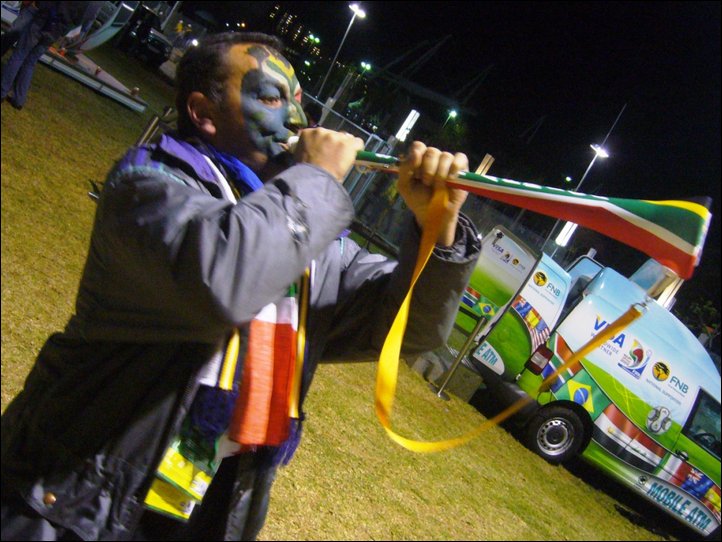
A vuvuzela, sometimes called a “lepatata” (its Setswana name) or a stadium horn, is a blowing horn approximately 1 m (3 ft 3 in) in length. It is commonly blown by fans at football matches in South Africa. The instrument requires some lip and lung strength to blow and emits a loud monotone (B?). A similar instrument (known as corneta in Brasil and other Latin American countries) is used by football fans in South America.Vuvuzelas have been controversial. They have been associated with permanent noise-induced hearing loss, cited as a possible safety risk when spectators cannot hear evacuation announcements, and potentially spread colds and flu viruses on a greater scale than coughing or shouting. Commentators have described the sound as “annoying” and compared it with “a stampede of noisy elephants, “a deafening swarm of locusts”, “a goat on the way to slaughter”and “a giant hive full of very angry bees.”
The sound level of the instrument has been measured at 131 dB(A) at the opening of the horn and at 113 dB(A) two metres in front of the opening, both dangerously high levels for unprotected ears.

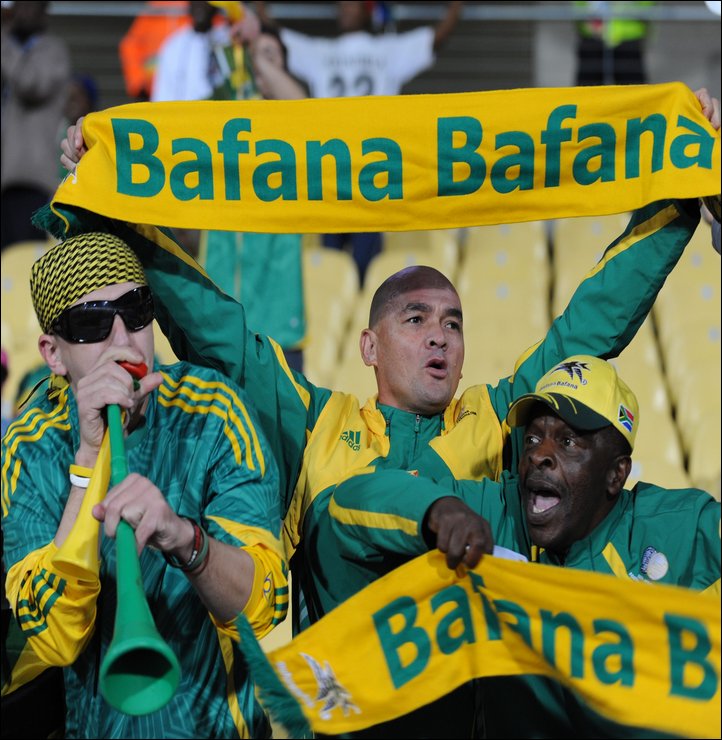
This type of plastic horn or trumpet has been used in Mexican stadiums since the 1970s.Originally made out of tin , the vuvuzela became popular in South Africa in the 1990s. Well-known Kaizer Chiefs FC fan Freddie “Saddam” Maake claims to have invented the vuvuzela by adapting an aluminium version as early as 1965 from a bicycle horn after removing the black rubber to blow with his mouth. He later found it to be too short and joined a pipe to make it longer. Maake has photos of him in the 1970s and 1980s at local South African games and international games in 1992 and 1996 and at the 1998 World Cup in France, holding the aluminium vuvuzela. He says the instrument was banned as authorities ruled it a dangerous weapon, which prompted him to find a plastic company that could manufacture it.
In 2001, South Africa-based company Masincedane Sport began to mass-produce a plastic version. Neil van Schalkwyk, the co-owner of Masincedane Sport, won the SAB KickStart Award in 2001.
Vuvuzelas have been said to be based on kudu horn instruments and thus rooted in African history, but this is disputed.During the last quarter of a match, supporters blow vuvuzelas frantically in an attempt to “kill off” their opponents.
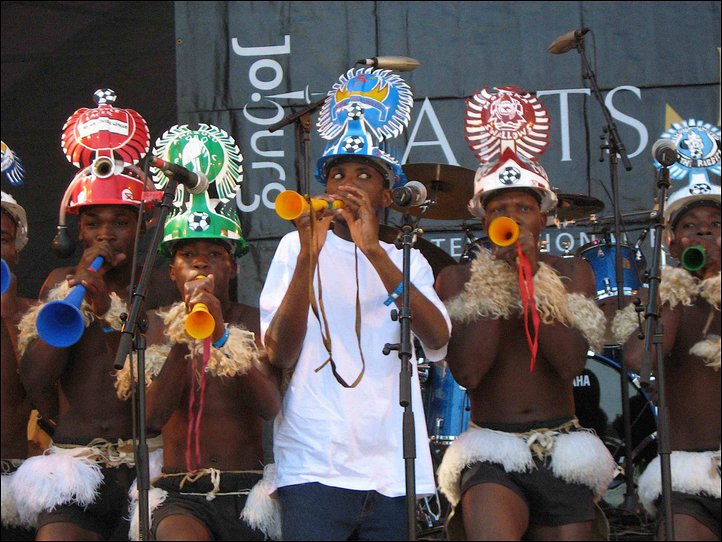
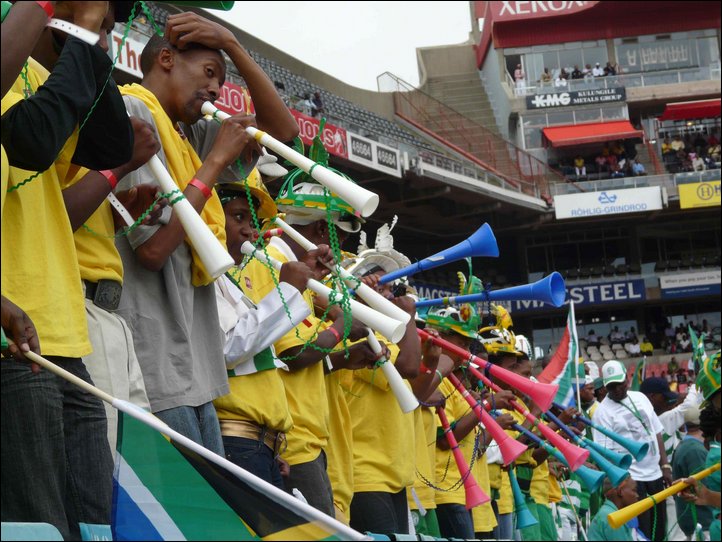
The origin of the name vuvuzela is disputed. It may have originated from Zulu for “making a vuvu noise,” directly translated “vuvu-ing” because of the “vuvu” sound it makes, or from township slang related to the word for “shower”.
In early 2010 members of the Nazareth Baptist Church claimed that the vuvuzela belonged to their church, and threatened to pursue legal action to stop fans playing the vuvuzela at the World Cup.
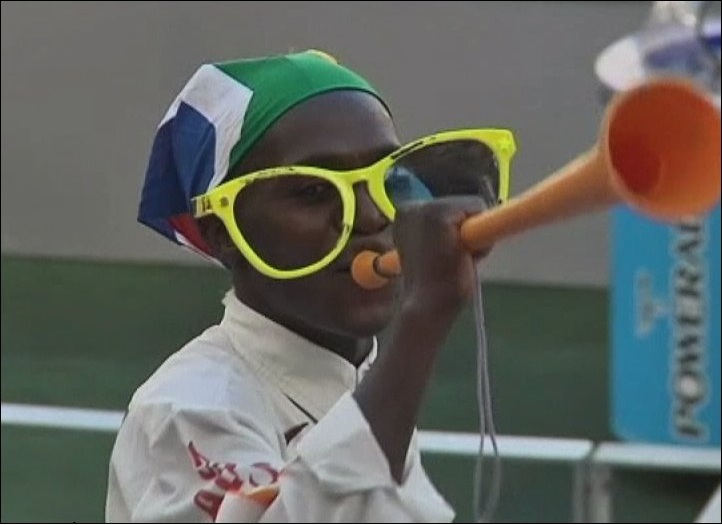
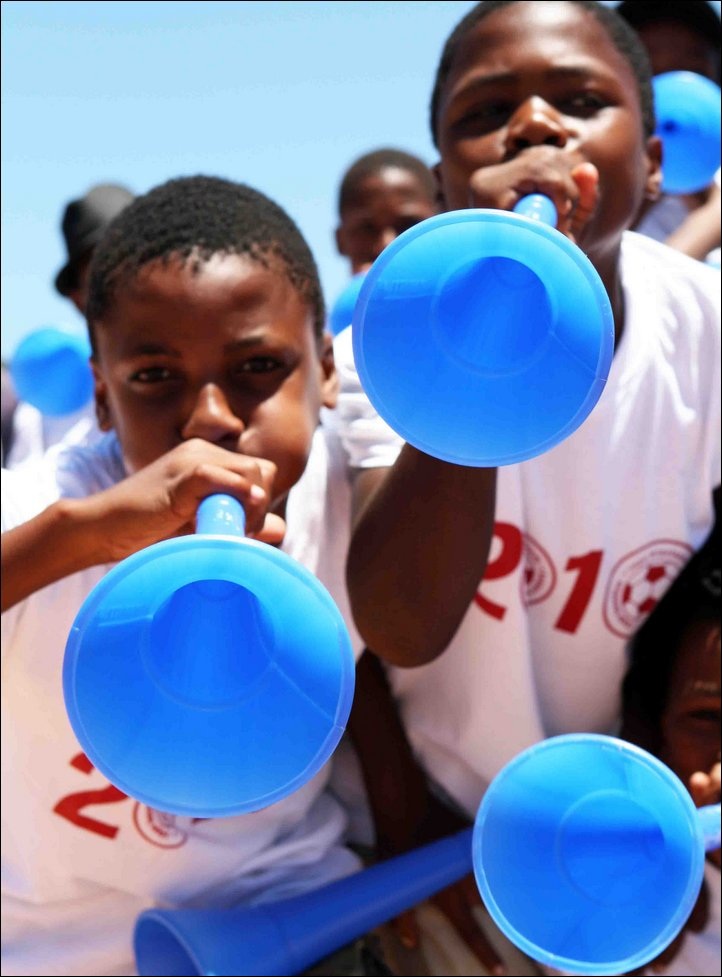
After the Confederations Cup FIFA received complaints from multiple European broadcasters who wanted it banned for the 2010 FIFA World Cup because the sound drowns out the commentators. Prior to the event Netherland coach Bert van Marwijk and Spanish midfielder Xabi Alonco, we already mentioned, also called for a ban, the latter saying the horns make it hard for players to communicate and concentrate while adding nothing to the atmosphere.
During the 2010 FIFA World Cup, Hyundai and a local South African advertising agency called Jupiter Drawing Room created the largest working vuvuzela in the world — 114 feet (35 m) long — on an unfinished flyover road in Cape Town. The vuvuzela is powered by several air horns attached at the “mouthpiece” end, and it will be blown at the beginning of each of the World Cup matches.
On 13 June 2010 the BBC reported that the South African organising chief Danny Jordaan is considering a ban of the vuvuzela during matches. Jordaan noted that “if there are grounds to do so, yes [they will be gotten rid of]” and that “if any land on the pitch in anger we will take action.” During the event many competitors have criticised and complained about the noise caused by the vuvuzela horns, including France’s Patrice Evra who blamed the horns for the team’s poor performance.He also claimed that the sound of the vuvuzelas away from the stadiums hampered the ability of the players to get their rest.Other critics include Lionel Messi who complained that the sound of the vuvuzelas hampered communication among players on the pitch,and broadcasting companies, who complained that commentators’ voices were being drowned out by the sound. Cristiano Ronaldo went on record to state that the sound of the vuvuzelas disturbed the teams’ concentration.
Others watching on television have complained that the ambient audio feed from the stadium only contains the sounds of the vuvuzelas and the natural sounds of people in the stands are drowned out
